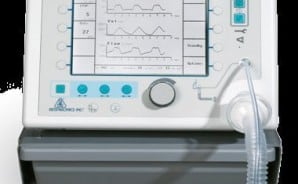Following the video on how to use non-invasive ventilation, I was asked to briefly again explain in graphical form how I see non-invasive ventilation as working. This is a very basic view.
In terms of Non Invasive Ventilation, we can first start by thinking about CPAP (Continuous Positive Air Pressure) Ventilation. We can set this at a minimum of 5cm H20. It provides a continuous pressure both through inspiration and expiration and it’s great at keeping the alveoli open.
What is CPAP/ IPAP and EPAP?
From CPAP came BiPAP(Bilevel Positive Airway Pressure). In BiPAP mode, the machine assists the patient in taking a breath against the constant pressure of CPAP(which is called EPAP(expired positive airway pressure) and delivers pressure support. That means that it assists the patient in inspiration. A minimum number of breaths can be set, so that if the patient isn’t breathing, the machine can induce a breath by increasing pressures. The IPAP is the inspiratory positive air pressure. The difference between IPAP and EPAP is the pressure support. Levels usually start at EPAP of 5-6cmH20 and IPAP of 10-2cmH20, with a minimum difference of 5cmH20. The pressure support effectively measures how much we can support the patient’s work of breathing.
Another way to look at this is that the area under the graph is the OXYGENATION and the number of breaths x the tidal volume(pressure support) is the minute ventilation and can affect CO2. If oxygenation is what is important, we can increase the oxygenation of the functional residual capacity by increasing the CPAP element. If the work of breathing is high and other parameters are normal, an increase in pressure support may help the patient.
What does this mean in practical terms?
Put in another way:
Patient oxygenation is affected: increase oxygen saturation delivered + EPAP, so more alveoli are recruited.
If the work of breathing needs to be assisted: Increase the difference between IPAP and EPAP. Aim for 10cm H20 difference, but go up to 12 . Try and not exceed this, as pressures may be too high.










